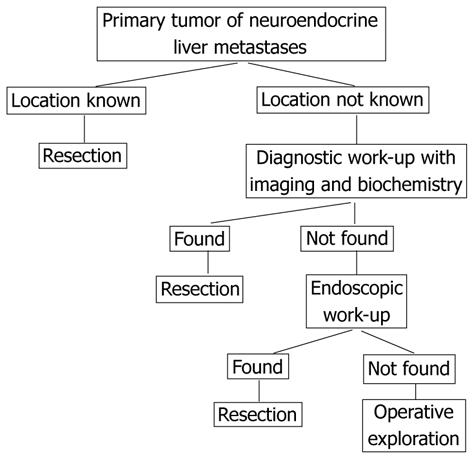Copyright
©2012 Baishideng Publishing Group Co.
World J Gastroenterol. Mar 14, 2012; 18(10): 1009-1014
Published online Mar 14, 2012. doi: 10.3748/wjg.v18.i10.1009
Published online Mar 14, 2012. doi: 10.3748/wjg.v18.i10.1009
Figure 1 Use of endoscopic and operative exploration in the search for primary tumors in patients with neuroendocrine liver metastases.
Figure 2 Operative specimen of a small primary neuroendocrine tumor (arrow) in the terminal ileum detected by colonoscopy, extending beyond the ileocecal valve.
Intraoperatively, this tumor was not detectable, either by inspection from the serosal side or by palpation; it was removed based on its endoscopic localization.
Figure 3 Operative specimen from a neuroendocrine tumor patient with bulky disease in the mesentery; no primary tumor could be found pre- or intraoperatively.
The mesenteric tumor was resected en bloc, along with the adjacent loop of the ileum (arrow); meticulous histopathological work-up of this ileal loop yielded two foci of neuroendocrine carcinoma.
- Citation: Cerwenka H. Neuroendocrine liver metastases: Contributions of endoscopy and surgery to primary tumor search. World J Gastroenterol 2012; 18(10): 1009-1014
- URL: https://www.wjgnet.com/1007-9327/full/v18/i10/1009.htm
- DOI: https://dx.doi.org/10.3748/wjg.v18.i10.1009











